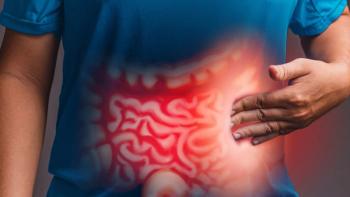
Our Medical and Societal Choices May Help Reduce Our Cancer Risks
To honor National Cancer Prevention Month in February, one patient with cancer offers people some tips on how they certain medical and societal choices may help reduce the risk of cancer.
When you live with cancer, there are all sorts of emotional landmines to navigate. For me, one of those rolls around annually in February as it is “National Cancer Prevention Month.”
That’s because at one time I was innocent enough to think my personal choices were enough to prevent me from getting cancer. What I didn’t understand was that “cancer prevention” for the individual is primarily cancer risk reduction.
I was falling for what so many people without cancer, and some cancer survivors, believe: If eating a healthy diet prevents cancer, then I am safe. If exercising prevents cancer, then I am safe. If breastfeeding prevents cancer, then I am safe. If not smoking prevents cancer, then I am safe. If using sunscreen prevents cancer, then I am safe.
You see where this is going. Everything to prevent cancer was within my control. Except it wasn’t.
That’s because modifiable behaviors aren’t the full story in cancer development. Even when we know better, we don’t want to believe that our personal “good choices” aren’t enough to keep us safe from the monster of a cancer diagnosis. It’s why, when someone learns my mother-in-law died of lung cancer, the very first question is whether she smoked (she did not). It’s why I still give myself pep talks about my good habit of exercising most days, wanting to believe it’s one reason my cancer hasn’t further progressed. Of course, that isn’t accurate. I have had a best-possible response to my first line of therapy. That’s the most powerful anti-cancer behavior in my life.
This cancer prevention month, in addition to those behaviors you can modify on your own (diet, exercise, smoking, sunscreen, weight, etc.), I’m looking at six ways each of us can possibly reduce risk through our medical and societal choices.
Don’t skip screenings
I usually hate when people equate getting a mammogram with preventing cancer. Yet, I believe in personalized breast screening that considers family history, breast density, age and race. Colon cancer screening — colonoscopy — may include removal of pre-cancerous polyps. This traditional colon cancer screening involves temporary unpleasantness but can be a preventive intervention in individual cases.
HPV vaccination
Hepatitis B vaccination
In the United States, about a third of liver cancers are linked to hepatitis B and C viruses (HBV and HCV). HBV vaccination is recommended for children but can be administered to unvaccinated adults who are at risk (ask your doctor if that includes you). Though there’s no vaccine for HCV, there are now treatments with a 95% success rate. If you have HCV, consult with your doctor.
Know your risk
Ask about genetic testing. These tests can help you and your doctor find the most appropriate treatments if diagnosed with cancer and for preventive measures. If you find that you have a mutation that predisposes toward cancer and runs in families, such as BRCA1 or BRCA2, ask your relatives if they would like you to share that information with them. Though these discussions can be difficult, knowing familial risk can help your relatives make informed choices about getting their own genetic testing.
Race makes a difference
If you are Black and at high risk for breast cancer, a
Reducing risk exposure
Beyond your personal choices that affect risk, “modifiable behaviors” such as smoking and diet, there are population-wide choices regarding industrial and environmental pollutants that can reduce risk as well. Air pollution has been linked to worse outcomes in lung cancer, but also in breast, pancreatic, and liver cancers. Tap water pollutants, certain plastics, and more have also been linked to cancer.
For more news on cancer updates, research and education, don’t forget to




